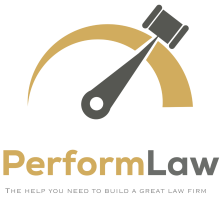Profitability analysis is a powerful tool that can revolutionize the financial health and operational efficiency of law firms. By delving into the transaction-level details, law firms can unlock a world of opportunities to optimize their profitability and ensure long-term success.
Key Applications of Profitability Analysis for Law Firms:
Let's explore four key applications of profitability analysis in more depth:
1. Financial Sustainability: |
| By understanding which transactions generate the most profit, firms can make strategic decisions about where to invest, how to attract and retain top legal talent, and how to navigate economic challenges. |
2. Pricing Decisions: |
| Profitability analysis allows firms to dissect the costs associated with delivering legal services and align them with market demand. Law firms can use these insights to fine-tune their pricing structures for maximum profitability. |
3. Resource Allocation: |
| Hourly profitability analysis enables law firms to allocate resources more effectively. By pinpointing the most profitable practice areas, firms can strategically direct their resources where they will have the greatest impact, enhancing both efficiency and profitability. |
4. Benchmarking |
| Detailed profitability analysis allows law firms to benchmark their performance against peer firms or industry standards. This benchmarking helps firms identify areas for improvement and implement strategies to enhance their competitiveness. |
Key Metrics for Profitability Analysis
To conduct a thorough profitability analysis, law firms need to focus on several key metrics. These metrics provide critical insights into different aspects of the firm's financial performance:
- Profit Margin
Transactional profit margin measures a law firm's profitability by calculating the net income as a percentage of total revenue for each hour worked. Minor adjustments can mean significant returns. - Revenue and Cost Per Timekeeper
Revenue, cost, and profit per timekeeper among different clients and matters provide insights into the productivity and profitability of individual lawyers in various situations within the firm. - Billable Hours
Billable hours measure the utilization of lawyers' time spent on client work, which directly contributes to the firm's revenue and profitability. Knowing the profitability of each hour allows a firm to make precise adjustments. - Collection Ratio
The collection ratio indicates the effectiveness of the law firm's billing and collection processes. A higher collection ratio means the firm successfully converts billable hours into cash. Insights into which hours bring the highest realization allow for targeted improvements.
Profitability Analysis Process
The process of profitability analysis involves several key steps, each essential for gathering accurate data and deriving meaningful insights:
PROFITABILITY ANALYSIS PROCESS
1. DATA COLLECTION |
| Gathering relevant financial information, such as revenue, expenses, billed and billable hours, from the firm's accounting system or time and billing software. |
2. EXPENSE ANALYSIS |
| Categorizing and allocating expenses to each hour or matter. |
3. REVENUE ANALYSIS |
| Filtering revenue by practice area, client or matter type, and timekeeper to identify profitable clients, matter types, and timekeepers |
4. PROFITABILITY CALCULATION |
| Calculating profitability metrics, such as profit margin and net income per hour, to assess the firm's overall profitability. Grouping results to increase the power of the analysis. |
5. BENCHMARKING |
| Compare the firm's results against peer firms or industry benchmarks to identify areas for improvement |
Enhancing Profitability
To enhance profitability, a law firm should adopt a strategic approach that addresses both revenue generation and cost control. Here are some effective strategies that can be implemented:
Cost Control:
To reduce expenses, law firms can implement cost-control measures such as streamlining operations, negotiating favorable supplier contracts, and optimizing technology usage.
Pricing Optimization:
Firms can review and tailor their pricing strategy to ensure that it aligns with market demand and provides a reasonable profit margin.
Practice Area Focus:
Concentrating on profitable practice areas or services allows law firms to allocate more resources and enhance their profitability.
Client Relationship Management:
Developing and maintaining profitable client relationships while providing exceptional legal services can lead to repeat business and referrals, which can contribute to the firm's profitability.




 />i
/>i

